It's Not Just The Elgin Marbles. Here Are 5 Other Times The UK Has Refused To Return Artefacts
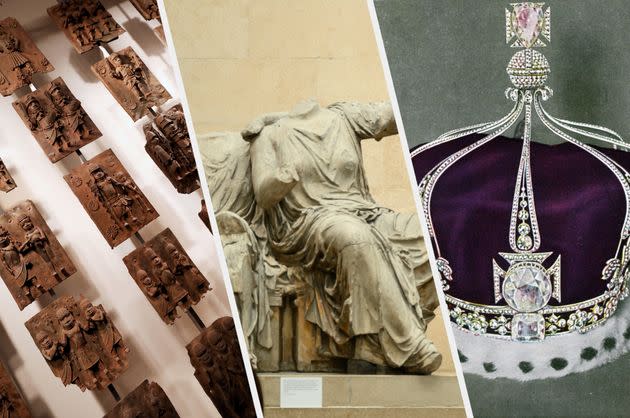
Three examples of artefacts which originated somewhere else but are currently kept in the UK
Rishi Sunak has just triggered a diplomatic row after Greece asked – once again – for the UK to return its ancient artefacts.
This particular spat is over the Elgin Marbles, also known as the Parthenon Sculptures, which the Greek PM told the BBC on Sunday ought to be returned to their rightful home in Athens.
Sunak subsequently cancelled a meeting with his Greek counterpart, as No.10 claimed discussing the Marbles in public during a visit to the UK broke a promise between the two countries.
But, this is not the first time the UK has been questioned over the number of artefacts it has taken from other countries – and still not returned – over the years.
In fact, the British Museum even has a “contested items” section on its website.
So here’s a look at just six items, including the Marbles, which currently reside in the UK – despite originating elsewhere.
1. Benin Bronzes
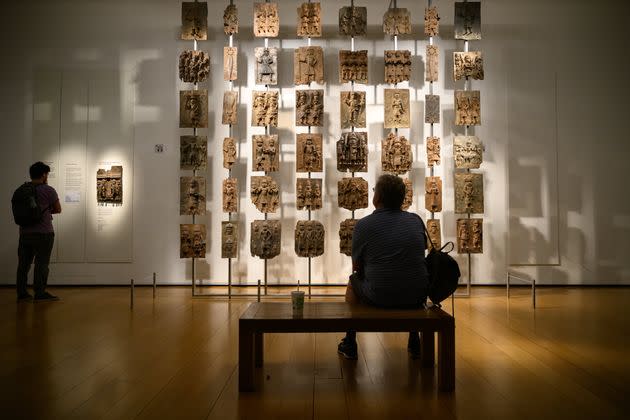
Items from a collection of metal plaques and sculptures taken from modern-day Nigeria in 1897.
Thousands of 13th Century bronze sculptures which once covered the royal palace of the Kingdom of Benin (modern-day Nigeria) now sit in the British Museum.
British troops punished rebels in the then-colonised land for pushing back against the British Empire in 1897, destroying the Kingdom at the same time.
More than 200 bronze plaques along with more than 900 historic objects were looted in the process.
Nigeria has been independent since 1960 and has repeatedly tried to retrieve the Benin Bronzes, considered to be among Africa’s most important artefacts.
While the British Museum acknowledges they were acquired as part of “aggressive expansion of colonial power”, it has only ever agreed to loan them back to Nigeria.
Meanwhile, New York’s Metropolitan Museum returned 12 Benin Bronzes to the Nigerian government last year after an investigation concluded they were illegally trafficked.
2. Rosetta Stone
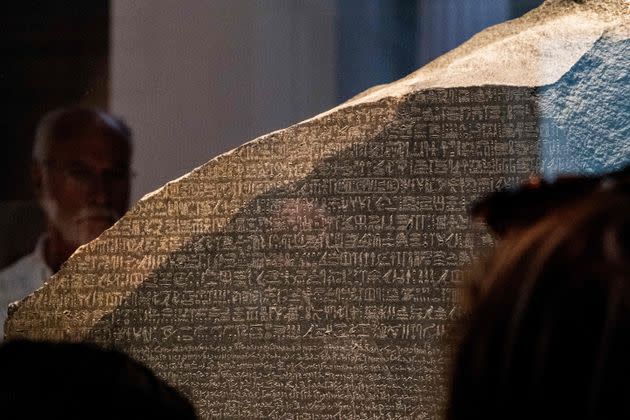
Visitors view the Rosetta Stone at the British Museum in London on July 26, 2022
Another object which currently sits in the British Museum, the Rosetta Stone, is a pivotal piece dating back to the 2nd Century. It has been used to help people understand how Ancient Egypt operated and how hieroglyphics worked.
The French Emperor Napoleon Bonaparte seized the item back in 1799 – and the British Empire stole it from him after it beat the French in 1801.
Last year, two petitions in Egypt started to call for the stone’s return – one of which called the decision to take the stone as “an act of plunder” of a “spoil of war” – saying Egypt had no say in the removal of the object.
But, the British Museum replied that the 1801 treaty including a signature of an Ottoman admiral who worked with the British and who supposedly represented Egypt at a time it was ruled by the Ottoman sultan.
The institution claimed Egypt is yet to submit a request for its return, and there are 21 of 28 known copies of the stone still in Egypt.
3. Koh-i-Noor
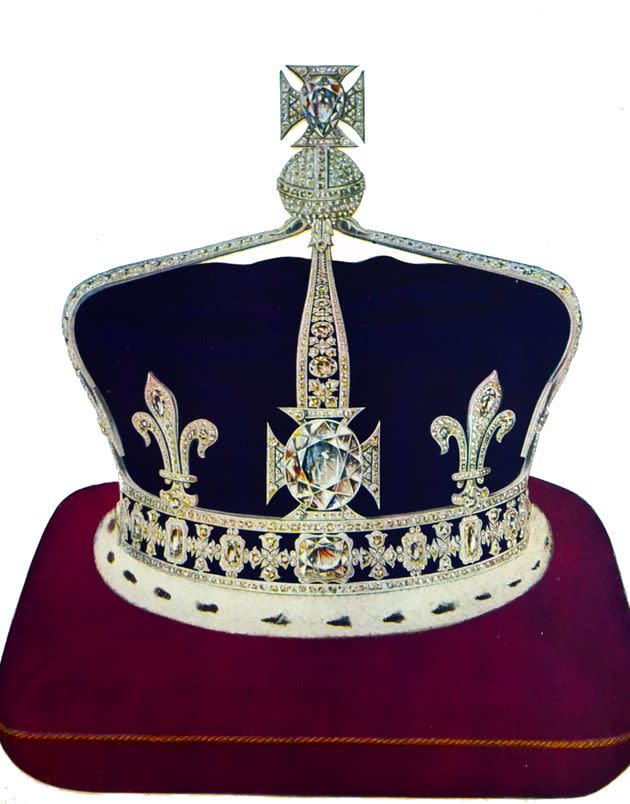
Queen Elizabeth's (Queen Mother) crown, which includes the Koh-I-Noor diamond.
India wants this huge diamond – one of the largest in the world – back.
In fact, so does Pakistan and Afghanistan. All three countries have argued over the rightful owners of the gem. But, it currently sits in the Tower of London.
Koh-i-Noor means Mountain of Light and it was discovered in the Golconda mines, now known as the southern Indian state of Andhra Pradesh.
It was then passed to between Mughal princes, Iranian warriors, Afghan rulers and Punjabi Maharajas before it was given in 1849 to the East India Company, who gifted it to Queen Victoria.
It originally weighed 191 carats but it was recut in 1852 for enhancement, and is now 105-carats.
It was incorporated into the central stone into a state crown which was eventually used for Queen Elizabeth – the current King Charles’ grandmother and the consort of George VI – at her 1937 coronation.
It did not feature in Queen Camilla’s coronation in May 2023.
However, Buckingham Palace has not openly acknowledged these calls for the jewels to be returned.
The Tower of London’s Crown Jewels exhibition did acknowledge that the jewel was “taken not given” to Britain when it opened earlier this year.
4. Cullinan I
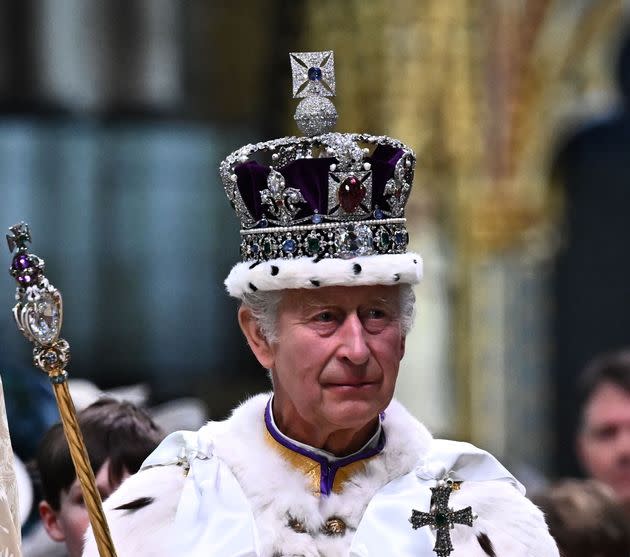
King Charles III wearing the Imperial state Crown carrying the Sovereign's Orb and Sceptre leaves Westminster Abbey after the Coronation Ceremonies in central London on May 6, 2023.
The world’s largest known clear-cut diamond, the Great Star of Africa or Cullinan I, is now the centre piece in the Sovereign’s sceptre.
It was once part of the larger Cullinan diamond – the largest uncut diamond ever discovered at 3,106 carats. That was discovered in 1905 in South Africa, when the country was as part of the British Empire.
It was then cut into nine major stones and 96 smaller ones, including the 500-carat Great Star of Africa.
Another stone from the large diamond is also part of the crown jewels – the Cullinan II or Second Star of Africa sits on the front band of the Imperial State Crown – but, it’s the Great Star of Africa which has caused the most controversy over the years.
Demands for it to be returned grew following Queen Elizabeth II’s death in September 2022.
A member of the South African parliament Vuyolwethu Zungula called for his government to “demand reparations” and demanded the “return of all the gold, diamonds stolen by Britain” last year.
More than 6,000 people also signed a petition calling for it to be returned to its country of origin.
However, according to the Royal Collection Trust, it was presented to King Edward VII in 1907 as a birthday gift having been purchased by South Africa’s Transvaal government.
5. Stone moai
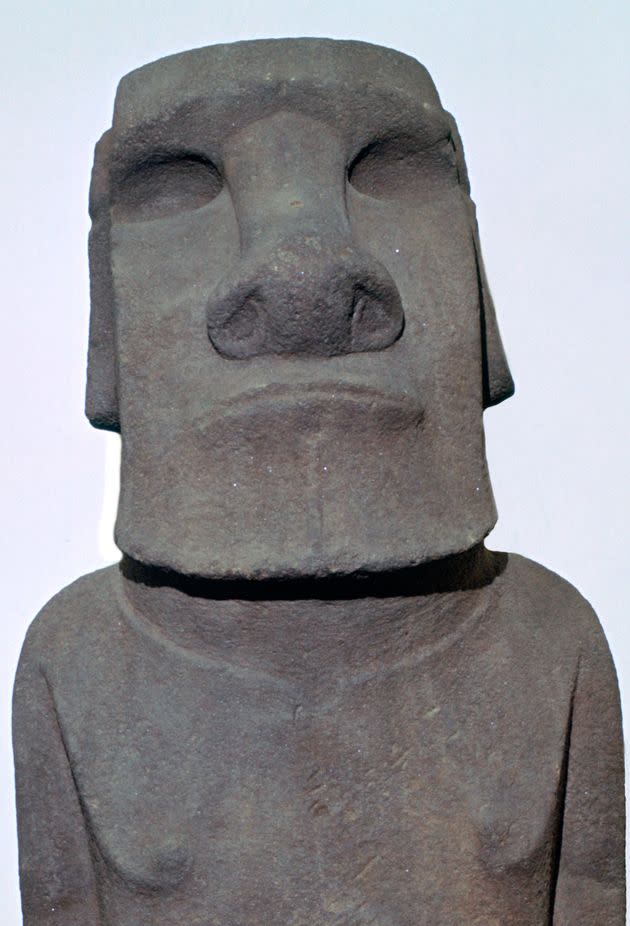
Hoa Hakananai'a, from Orongo, Easter Island (Rapa Nui), Polynesia, c1000.
The British Museum holds two large stone moai from Easter Island – also known as Rapa Nui. These are large statues used to be placed on ceremonial platforms, named Hoa Hakananai’a and Moai Hava.
Hoa Hakananai’a means lost, hidden or stolen friend, and is said to date back to 1000-1200, and is one of 10 moai known to be made out of basalt.
Moai Hava, a name meaning dirty, repudiated, rejected or lost, dates from 1100 to 1600, and is made of volcanic tuff.
Moai are usually described as the living faces of ancestors. These two came to be in the UK after a British survey ship visited the island in 1868.
They were offered them to Queen Victoria, who donated them to the British Museum.
Rapa Nui officially requested the return of both objects in July 2018, and there has since been discussions of a “memorandum of understanding” about a potential collaborative project between the two parties.
However, they have not been returned.
6. Elgin Marbles
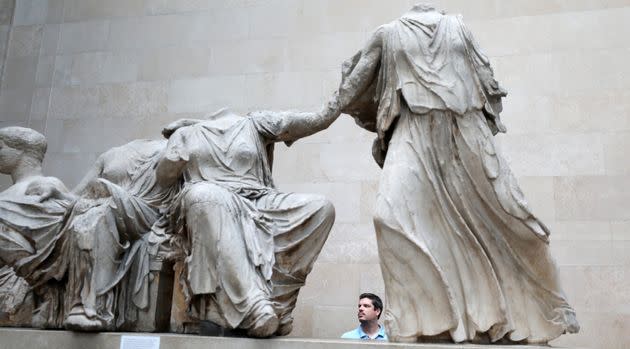
The Parthenon Marbles, a collection of stone objects, inscriptions and sculptures, also known as the Elgin Marbles, in the British Museum in London, Britain, Sept. 7, 2023.
The Elgin Marbles – also known as the Parthenon Sculptures – were removed from Athens by the British ambassador Lord Elgin in the 19th Century.
He had permission from the Ottoman authorities, who had ruled the city for 400 years at that point.
The collection dates back to 2,500 years ago and is made up of figures, a frieze and panels. Half of the surviving marble works are in London and the other half are in Athens.
Greece has been requesting these items be formally returned since 1983.
But, the British Museum says it is unable to give up ownership of the sculptures under the terms of the 1963 British Museum Act, which means objects cannot be removed from institution’s collection.
The Labour Party has indicated that it would look into loaning the artefacts back to Greece, but would not change the law, while the Conservative government has refused to consider relocating the statues.

 Yahoo Lifestyle
Yahoo Lifestyle 